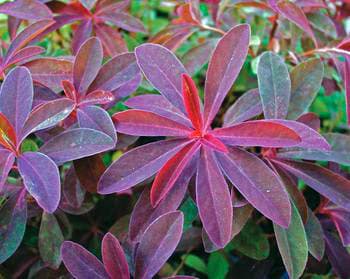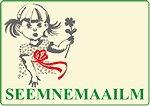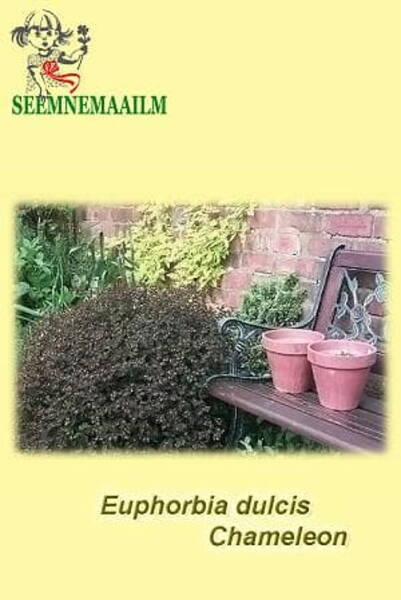Family: Euphorbiaceae
Origin: Southern Europe to Macedonia
Special Features: Distinctive purplish-brown leaved selection provides a wonderful contrast to the subtle chartreuse blossoms.
Color: Tiny chartreuse
Natural Flowering Period: May - June
Winter Hardiness: Z6
Growth Habit: Mounding
Foliage: Oval shaped succulent leaves colored purplish-brown
Height with Flower: 45 cm
Spacing between Plants: 45 cm
Soil Requirement: Well-drained soils; pH 5.8 - 6.8
Location: Full sun to particial shade
Use: Plant together in containers or the border with Geranium sanguineum, Potentilla nepalensis "Shogran" and Salvia argentea
Specialities: Outstanding foliage.

Cultural Tips:
Grams per 1000 seeds: 2,5
Seed Requirement: 6 g / 1000 plants
Best Sowing Date: November - March
Way of Germination: Cold Germinator
Germination: The sowing must be kept warm (about +18 to 22°C) and moist for the first 2-4 weeks. After this period the sowing must be kept at a cold temperature (between -4 and +4°C) for another 4-6 weeks. It is not so important if the temperature is higher or lower during the cooling period, but the cooling period has to be prolonged because the synthesis of the germination inducer, hormonlike acid, slows down or comes to a standstill.
It is beneficial to cover the sowing with snow during the cooling-period. The temperature below it usually keeps in the optimum range of -4 to 0°C. The sowing is kept moist, and the melting snow helps to destroy the shell, which is advantageous for the germinating seedling. After this cooling-period the sowing may not be immediately exposed to high temperatures. The most effective temperatures are between +5 to 12°C, even if germination has started. The best location for this sowing, even in March, April and May, is the open field, the cold frame or a cold greenhouse.
Germination to Transplant: 4 - 8 weeks
Transplanting to salable Plant: 6 - 10 weeks
Fertilization: Medium.











